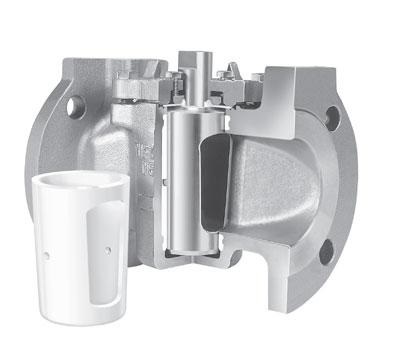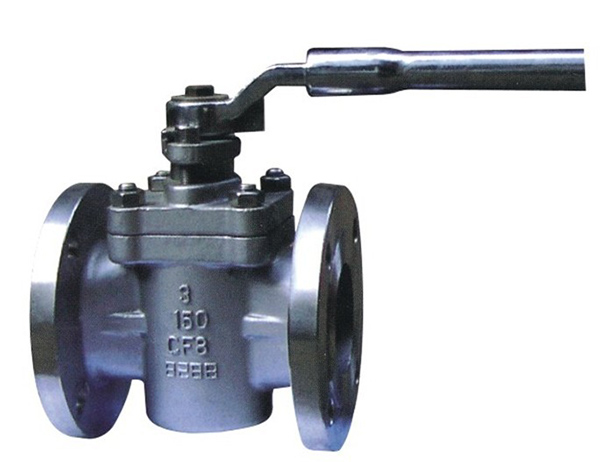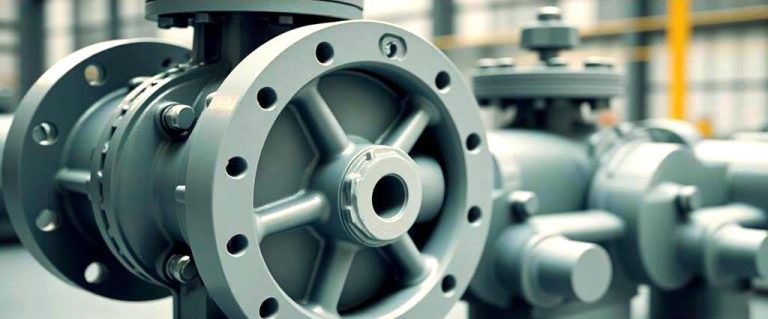Structural Characteristics and Pressure Testing Methods of Plug Valves
A plug valve is a rotary valve with a closing part or a plunger shaped structure. It realizes opening or closing by rotating 90 degrees to make the passage on the plug communicate with or separate from the passage on the valve body.
The shape of its plug can be cylindrical or conical. In a cylindrical plug, the passage is generally rectangular; while in a conical plug, the passage is trapezoidal. These shapes make the structure of the plug valve lightweight. It is most suitable for cutting off and connecting media, as well as for shunting applications. However, depending on the nature of the application and the erosion resistance of the sealing surface, it can sometimes also be used for throttling.
Ⅰ.Pressure testing methods of plug valves.
Strength testing.
During the strength test of the plug valve, the medium is introduced from one end, and the remaining passages are closed. The plug is rotated to each fully open working position in sequence for the test. If no leakage is found in the valve body, it is considered qualified.

Sealing performance testing.
- For straight through plug valves, the pressure in the cavity should be kept equal to that in the passage. Rotate the plug to the closed position and check from the other end. Then rotate the plug 180° and repeat the above test.
- For three way or four way plug valves, the pressure in the cavity should be kept equal to that at one end of the passage. Rotate the plug to the closed position in sequence. The pressure is introduced from the right angle end and checked from the other ends simultaneously.
- Before the test, it is allowed to apply a non acidic thin lubricating oil on the sealing surface. If no leakage and no expanding water droplets are found within the specified time, it is considered qualified.
- The test time for the plug valve can be relatively short, generally specified as 1 – 3 minutes according to the nominal diameter.
- The plug valve for gas should undergo an air tightness test at 1.25 times the working pressure.
Ⅱ.Selection and structural characteristics of plug valves.
Fluid flow and operation.
The fluid in the plug valve passes through directly, with low resistance. It is convenient and quick to open and close.
Function in pipeline.
In the pipeline, the plug valve is mainly used for cutting off, distributing, and changing the flow direction of the medium. It is easy to adapt to a multi – passage structure, so that one valve can obtain two, three, or even four different flow channels. This can simplify the design of the pipeline system, reduce the number of valves used, and some connection fittings required in the equipment.
Historical application and current usage.
The plug valve is one of the earliest valve components used by people in history. Due to its simple structure, quick opening and closing (the plug can complete the opening and closing action by rotating 1/4 turn), convenient operation, and low fluid resistance, it is still widely used today. Currently, it is mainly used in low pressure, small diameter, and situations where the medium temperature is not high.

Ⅲ.Selection principles of plug valve based on characteristics.
- For distributing media and changing flow directions, where the working temperature does not exceed 300°C, nominal pressure PN ≤ 1.6 MPa, and nominal diameter does not exceed 300 mm, multi channel plug valves are recommended.
- For equipment and pipelines in food enterprises (such as milk, juice, beer production) and pharmaceutical factories, clampyte conical plug valve plug valve made of austenitic stainless steel are recommended.
- In oilfield mining, natural gas field mining, branch pipes of pipeline transportation, and refining and cleaning equipment, where the nominal pressure class does not exceed Class 300 and nominal diameter does not exceed 300 mm, oil-sealed conical plug valves are recommended.
- In oilfield mining, natural gas mining, branch pipes of pipeline transportation, and refining and cleaning equipment, where the nominal pressure class does not exceed Class 7500, nominal diameter does not exceed 900 mm, and working temperature does not exceed 340°C, oil-sealed conical plug valves are recommended.
- In large chemical industries, for pipelines and equipment containing corrosive media that require fast opening or closing speeds:
For nitric acid-based media, the conical PTFE sleeve plug valve is suitable.
For acetic acid-based media, Crl8Nil2M02Ti stainless steel conical plug valves inlaid with PTFE sleeves are suitable. - In pipelines and equipment of gas, natural gas, and HVAC systems, where the nominal diameter does not exceed 200 mm, conical grand type plug valves are suitable.



